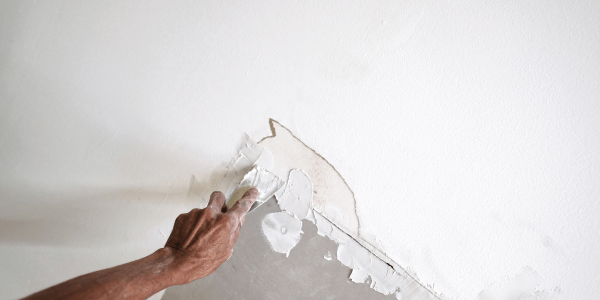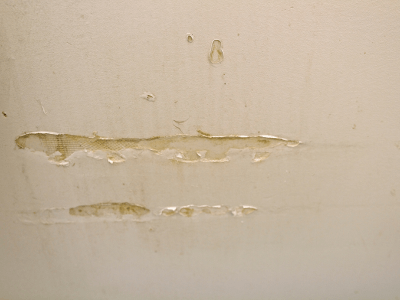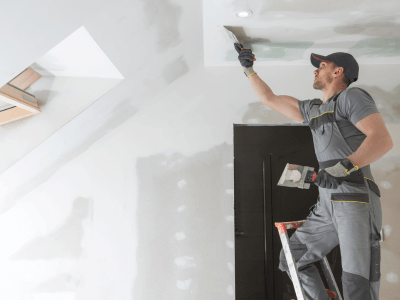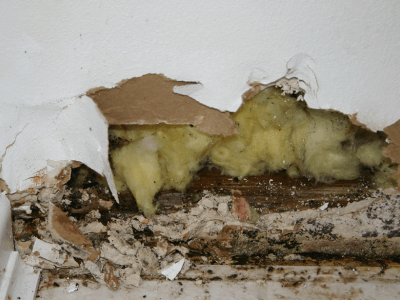
Water damage doesn’t just look unsightly—it can pose significant risks to your home’s structure and your health. Drywall, a staple in most homes, is particularly susceptible to water, making it crucial to address damage swiftly. Ignoring signs of water damage can lead to structural issues, mold growth, and expensive repairs. In this guide, we’ll explore how to identify drywall water damage, understand its stages, and determine when replacement is necessary. Let’s equip you with the knowledge to protect your home and make informed decisions.
How to Determine Drywall Water Damage
Signs of Water Damage in Drywall

Spotting early signs of water damage can save you a lot of trouble. Keep an eye out for discoloration—brown or yellow stains often indicate water has permeated your walls or ceiling. Soft spots are another telltale sign; press gently on suspected areas to see if they feel spongy. Additionally, peeling paint or wallpaper suggests underlying moisture issues, as does a musty odor, which could signify hidden water damage and potential mold growth.
Water stains on your drywall are often the result of a hidden leak, such as one coming from your ceiling. Learn more about the possible causes and solutions for ceiling leaks in our post: Water Leaking From Your Ceiling? Causes and Solutions.
Physical Tests
Don’t rely solely on visual cues. Conduct simple physical tests to confirm your suspicions. Press on discolored or suspicious areas to check for softness or dampness. If the drywall feels spongy or unusually soft, it’s a strong indicator of underlying water damage. Additionally, gently tap on the affected areas; a hollow sound could suggest that the drywall has become hollowed out due to water damage. These tests will give you a clearer picture of whether your drywall is compromised and requires immediate attention.
Stages of Drywall Water Damage
Early Stage
In the early stage, you might notice minor discoloration or slight dampness. Quick action, like using fans or dehumidifiers, can prevent further damage. Addressing issues at this stage is crucial to avoid escalation.
Moderate Stage
At this point, you may encounter soft spots, peeling paint, or warped drywall. While these issues are more severe, they might still be salvageable with thorough drying and assessment. Take swift action to evaluate the extent of the damage and repair what you can to prevent progression.
Advanced Stage
Severe softening, visible mold, and structural damage are hallmarks of advanced water damage. At this stage, replacement is often necessary due to compromised integrity and health risks. Mold growth, in particular, poses a serious threat to indoor air quality and health, especially for individuals with respiratory conditions.
Does Wet Drywall Always Need to Be Changed?
When It Can Be Saved

If water exposure is limited and addressed quickly, you can often save your drywall. Use fans or dehumidifiers to dry out the area thoroughly. Monitor the condition closely and ensure no lingering dampness remains. Make sure to check hidden areas for moisture as well, as water can seep into cracks or cavities.
When It Must Be Replaced
In cases of prolonged exposure, significant softening, or visible mold, replacement becomes imperative. Even if the drywall appears dry on the surface, internal damage can persist, which is why professional evaluation is crucial. Don’t take chances with your safety and the structural integrity of your home. For a deeper understanding of mold prevention and cleanup, the EPA’s Mold Cleanup Guidelines are a valuable resource to help you understand the health risks and how to deal with mold properly.
What Happens If Water-Damaged Drywall Is Ignored?

Mold Growth
Untreated drywall can become a breeding ground for mold. Mold not only damages your property but can also cause serious health concerns, including allergies and respiratory problems. It’s vital to address any signs of mold promptly to safeguard both your home and your health. Exposure to mold can lead to coughing, sneezing, and more severe reactions in individuals with asthma.
Musty odors are often an early sign of hidden mold growth in water-damaged drywall. If you’ve noticed a persistent smell, you may want to learn more about the potential dangers in our post: Red Flags for Mold: What a Musty Smell in Your San Antonio Home Could Mean.
Structural Issues
Severe water damage can compromise the structure of walls and ceilings, leading to costly repairs down the road. Ignoring such issues can result in weakened structures that threaten the safety of your home. Be proactive in addressing these problems to prevent further damage and expenses. Warped or buckled drywall often indicates more profound structural issues behind the walls.
Health Risks
Mold in water-damaged drywall poses significant health hazards:
- –Allergies: Mold can trigger allergic reactions, such as sneezing, runny nose, and itchy eyes.
- –Respiratory issues: Exposure to mold can worsen asthma symptoms or cause other respiratory problems.
- –Compromised immune system: Mold can weaken the immune system, making you more susceptible to infections.
- –Chronic health problems: In some cases, prolonged mold exposure can lead to chronic health issues like sinus infections or headaches.
When to Call a Professional
While some minor repairs, like drying out small areas, can be handled independently, there are times when professional help is necessary. If you encounter mold, advanced damage, or hidden water leaks, it’s time to call in the experts. Complete Flood Restoration offers services to ensure thorough evaluation and remediation, providing peace of mind. Professionals can help you determine the extent of the damage and whether full or partial replacement is necessary.
Conclusion
Drywall water damage is a serious issue that requires prompt and informed action. By identifying and addressing damage early, you can prevent costly repairs and ensure the safety of your home. Don’t wait for the damage to worsen—act fast and consult professionals like Complete Flood Restoration for a comprehensive inspection and consultation.
Protect your home and health today and enjoy peace of mind knowing your drywall is safe and sound. Consider reaching out to professionals for a thorough inspection and solutions tailored to your needs. The longer you wait, the more damage can occur—so take action now!
